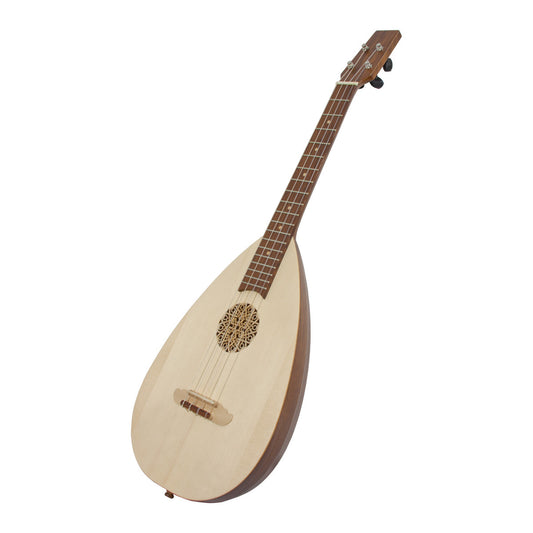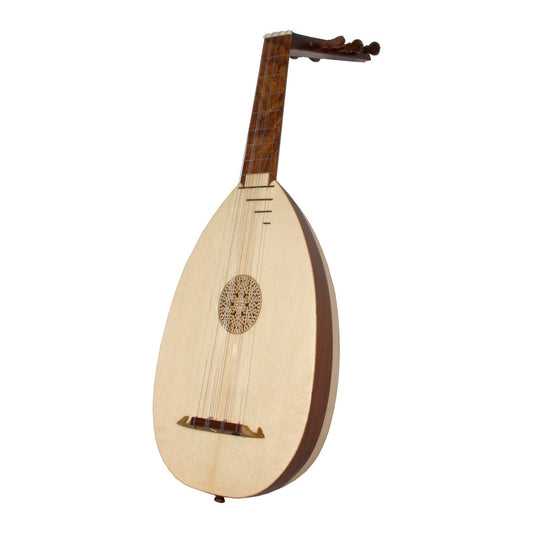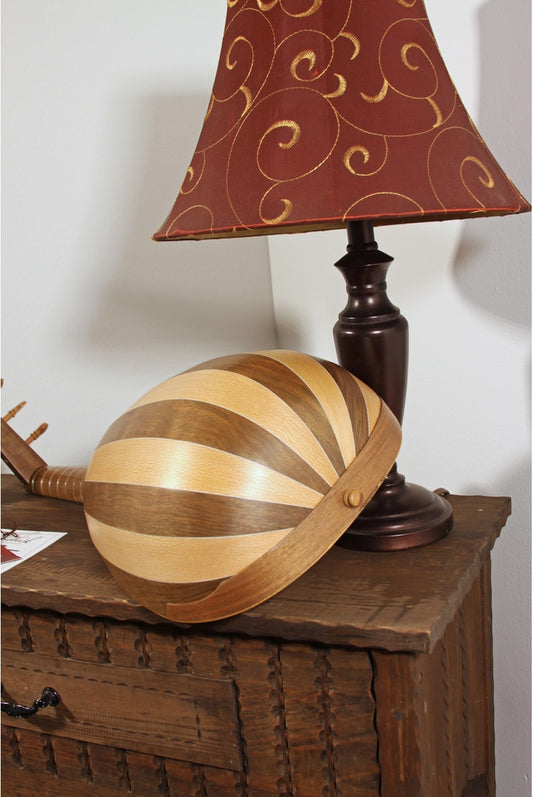The ukulele is a stringed instrument that was developed in the 1880s. The name roughly translates as "jumping flea" which is thought to have been inspired because of the movement of the players fingers, or it means "gift from afar" according to Queen Liliuokalani but it is not entirely clear. It is based on two small guitar-like instruments from Portugal, the cavaquinho and the rajao and was introduced to the Hawaiian Islands by Portuguese immigrants from Madeira and Cape Verde. There were three immigrants in particular, Madeiran cabinet maker Manuel Nunes, José do Espírito Santo, and Augusto Dias that are generally credited as the first ukulele makers.
Ukuleles are usually made from wood, though they can be composed of some plastic and in some cases, entirely made from it. Inexpensive ukuleles are most often made from ply or laminate woods, sometimes with a soundboard of a more acoustically superior wood such as spruce. More expensive ukuleles are made of solid hardwoods such as mahogany. Some of the most expensive ukuleles, which can cost upwards of thousands of dollars, are made from koa (Acacia koa), a Hawaiian wood.
Usually ukuleles have a figure-eight body shape similar to that of a small acoustic guitar. They are also often seen in non-standard shapes, such as cutaway shape and an oval, usually called a "pineapple" ukulele, invented by the Kamaka Ukulele company, or a boat-paddle shape, and occasionally a square shape, often made out of an old wooden cigar box or sometimes even like an axe guitar!
These instruments tend to have just four nylon or gut strings, though sometimes the strings may be paired in courses, giving the instrument a total of six or eight strings. When they have six or eight strings in four courses are often called taropatches, or taropatch ukuleles. They were once common in a concert size, but now the tenor size is more common for six-string taropatch ukuleles. The six string, four course version, has two single and two double courses, and is sometimes called a Lili'u, though this name also applies to the eight-string version.
The ukulele comes in 4 common sizes: soprano, concert, tenor and baritone and the less common sizes of soprano, which has a nut to bridge of under 13 inches and the bass ukulele being the largest sized uke. The most common tunings would be GCEA (the 'ole My Dog Has Fleas), especially for the soprano and concert ukuleles. The baritone uke is usually tuned DGBE though there are many different tunings that work wonderful for the ukulele. The sky is the limit!
The ukulele has inspired many "hybrid instruments" including the guitarlele, banjo ukulele, harp ukulele and even a lap steel ukulele! There are resonator ukes and electric ukes as well! There is the Tahitian stele ukulele which is usually carved from one piece of wood and does not have a hollow soundbox.
Aside from it's Portuguese ancestors (the cavaquinho and raja), it is also related to the cuatro from Venezuela, the vihuela from Spain, the tiple from Colombia, the charango from the Andes (which is made from an armadillo shell traditionally) and the timple of the Canary Islands. In Indonesia there is another Portuguese inspired instrument called the kroncong.
Ukuleles are well loved all around the world and continue to become more popular every day!
 Sold out
Sold out










